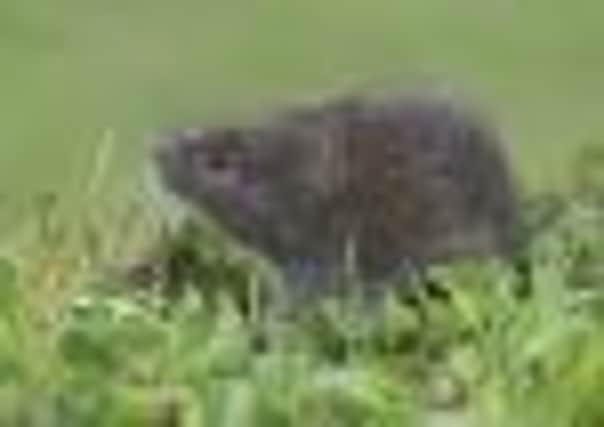Vole population decrease ‘bad news for others’


A Europe-wide study, led by researchers at Aberdeen University, has revealed a worrying “flattening” in vole numbers across the Continent while the normal natural order is for rodent numbers to vary enormously from year to year in a pattern which repeats itself every three to four years.
Yesterday the researchers warned that the findings could have “serious implications” for other species which feed on the small grass-eating rodents.
Advertisement
Hide AdAdvertisement
Hide AdScientists from Aberdeen, Norway, Sweden, Finland, Germany, Poland and France spent three years studying vole patterns stretching as far back as 1970.
Professor Xavier Lambin, the senior author of the study and professor of ecology at Aberdeen University, explained that, in a boom year – known as an “outbreak” – a single patch of grass the size of football pitch could shelter more than 500 voles. In a “crash” year as few as one or two voles would survive in the same area. But numbers would normally rebuild again to reach the high densities of the previous outbreak.
He said the cycles in vole abundance were used to act as the pace-maker in ecosystems because voles are a food staple for animals such as owls, kestrels, weasels and foxes.
Prof Lambin said: “Smaller herbivores like voles have population cycles which have a boom or bust dynamic – there used to be times of plenty of the animals and times of scarcity, as part of natural processes.
“However evidence has emerged in recent years of a greater uniformity in vole abundance between years.
“The outbreaks are no longer as marked. Like a weakening heart, the beat of the cycle is becoming fainter and this will profoundly affect many other species in ecosystems.”
He explained: “We studied 12 populations of voles across Europe and found that while a faint population cycle remains, it’s now much dampened down. The change is most evident in spring, reflecting a worsening of conditions for voles over winter.
“This change in one group of species at the bottom of the food chain is bad news for a diverse range of predators which relied on these years of plenty.
“Voles are herbivores that are nearly at the bottom of the food chain. What happens to voles does cascade upward to the many vole predators and downward to vegetation structure.”